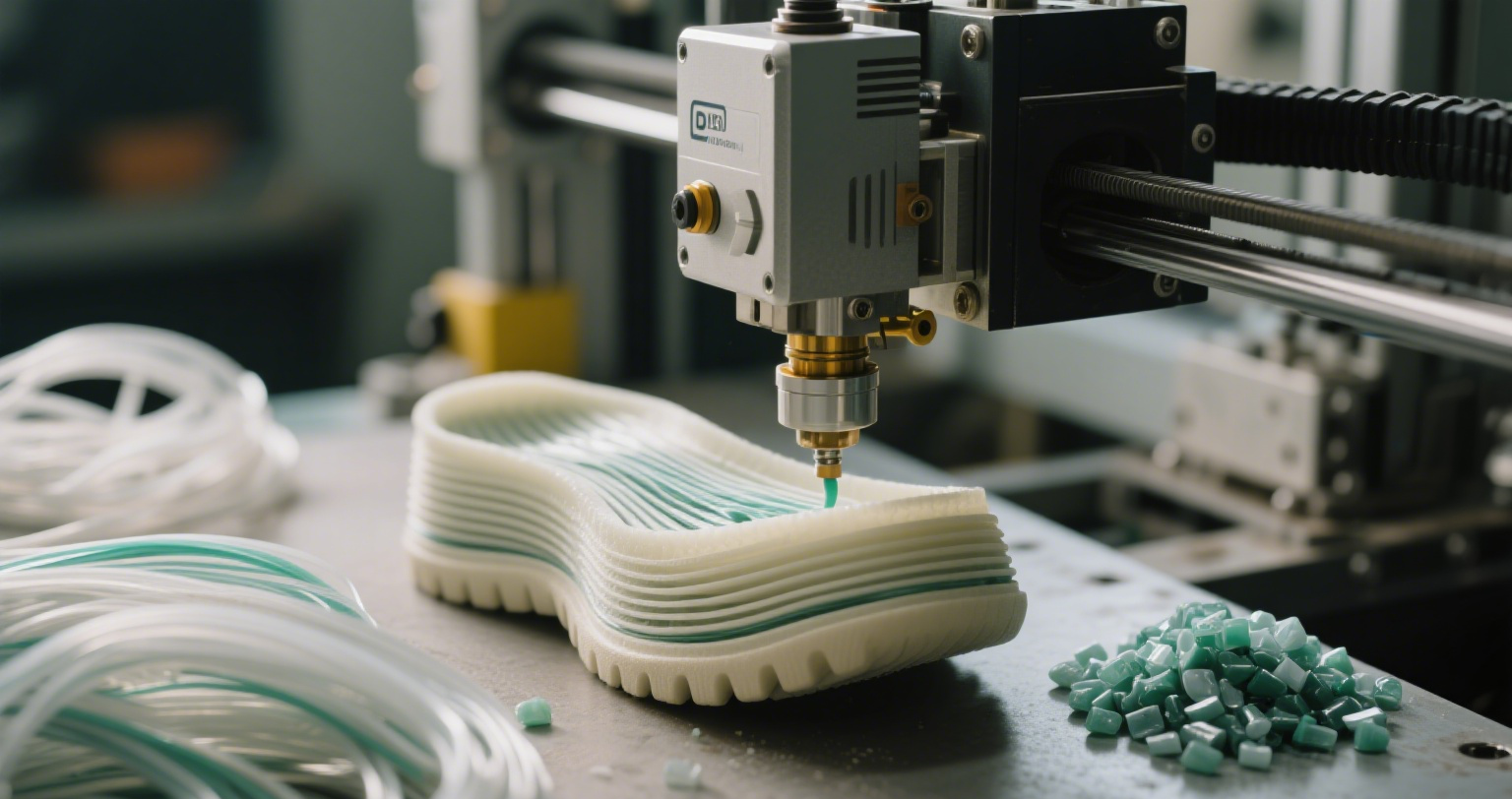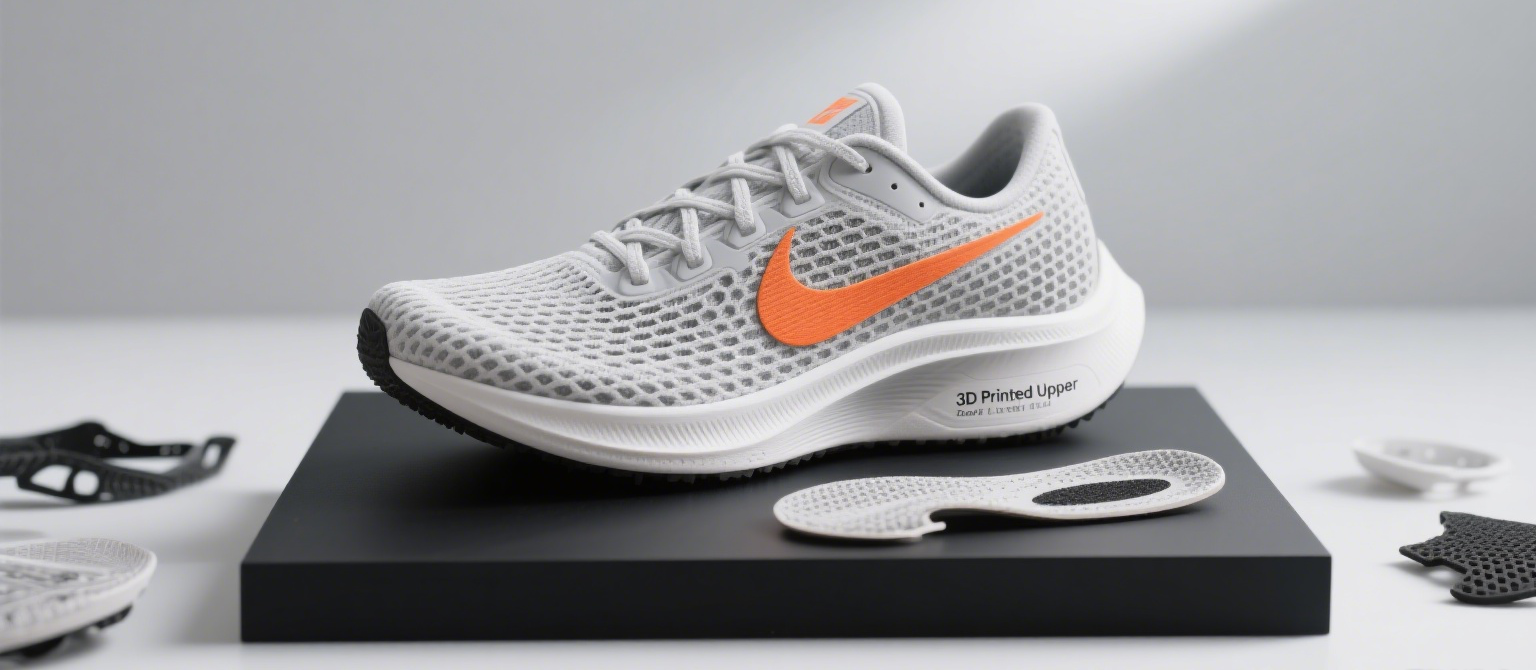Are you intrigued by how cutting-edge technology like 3D printing is merging with the urgent need for sustainability in the footwear industry? It's a game-changer.
3D printing is poised to revolutionize footwear by enabling rapid prototyping, customization, and on-demand production. It reduces waste, eliminates the need for traditional molds, and encourages the use of recycled or bio-based materials. This shift opens the door to more sustainable manufacturing processes and highly personalized, functional shoe designs.

1. How 3D Printing Is Transforming Fashion and Footwear
3D printing, also known as additive manufacturing, represents a paradigm shift in how fashion products are designed, developed, and produced.
Key Areas of Impact:
- Rapid Prototyping: Designers can create physical prototypes within hours, accelerating design cycles and lowering costs.
- Customization: From custom-fit shoes based on foot scans to bespoke performance gear for athletes, 3D printing supports true personalization.
- On-Demand Manufacturing: Shoes can be produced closer to the consumer, reducing inventory and shipping emissions.
- Material Innovation: Enables the use of recycled plastics, bio-based polymers, and advanced composites.
- Waste Reduction: Produces only what’s needed, minimizing excess material compared to traditional cutting or molding.
| Impact Area | How 3D Printing Transforms Footwear | Limitation of Traditional Methods |
|---|---|---|
| Design/Prototyping | Faster, cheaper, supports complex geometries | Slow, costly mold creation |
| Customization | Mass personalization, based on individual data | One-size-fits-all approach |
| Production Model | On-demand, localized, reduces unsold inventory | Mass production with higher risk of overstock |
| Material Use | Efficient additive process, recycled/bio-based input | Significant waste from subtractive methods |
| Product Performance | Optimized lattice structures for comfort/performance | Limited design complexity |
2. Industry Leaders: Nike, Adidas, and Beyond
Major brands have already adopted 3D printing to gain a competitive edge:
- Nike: Introduced the ZoomX Vaporfly Elite Flyprint in 2018 with a 3D-printed upper, showcasing lightweight, breathable performance materials. Nike also uses 3D printing for prototyping and athlete-specific customization.
- Adidas: Partnered with Carbon to launch Futurecraft 4D midsoles, using Digital Light Synthesis to create highly engineered cushioning systems.
- New Balance: Experimented with 3D-printed midsoles to enhance performance and comfort.
These initiatives prove that 3D printing is no longer experimental—it’s already shaping the future of footwear design and production.

3. Challenges Holding Back Mass Adoption
Despite its potential, 3D printing faces hurdles before it can replace traditional footwear manufacturing.
Core Challenges:
- Production Speed & Scalability: Printing a single midsole can take hours—far too slow for millions of pairs annually.
- Material Limitations: Suitable, durable, and cost-effective materials are still fewer than traditional options.
- High Costs: Both for advanced printers and for specialized sustainable filaments.
- Post-Processing Needs: Cleaning, curing, and finishing add time and labor.
- Build Volume: Large shoes often require multiple prints, adding complexity.
- Intellectual Property Risks: CAD files are vulnerable to theft and replication.
| Problem Area | Limitation for 3D Printing | Implication for Footwear Mass Production |
|---|---|---|
| Production Speed | Slow additive process | Not viable for millions of pairs annually |
| Materials | Limited durability, high cost | Less competitive for mainstream markets |
| Post-Processing | Adds extra time and labor | Offsets efficiency gains |
| Build Volume | Large parts require multiple prints | Adds assembly and weak points |
| Initial Investment | High equipment and software costs | Barrier for smaller brands |
| IP Security | Digital files at risk of replication | Counterfeiting concerns |
4. Are 3D Printed Shoes Truly Sustainable?
The sustainability of 3D printed footwear depends on materials, energy use, and lifecycle management.
Pros:
- Less Material Waste: Additive manufacturing minimizes scrap compared to cutting or molding.
- On-Demand Production: Reduces overproduction and unsold inventory.
- Localized Manufacturing: Cuts transportation emissions.
- Innovative Materials: Recycled PET filaments, bio-polymers, and plant-based resins are increasingly viable.
Cons:
- Energy Use: Some printing methods are energy-intensive. Benefits increase when powered by renewable energy.
- Material Choice: Using non-recyclable, fossil-fuel-based plastics undermines eco-claims.
- End-of-Life Issues: Without recyclability, sustainability remains limited.
| Sustainability Aspect | Positive Impact via 3D Printing | Key Variable for True Benefit |
|---|---|---|
| Material Waste | Up to 90% reduction vs. traditional methods | Depends on material choice |
| Inventory Management | On-demand, minimal overproduction | Requires accurate demand forecasting |
| Transportation Impact | Enables localized production | Proximity to end-consumers |
| Energy Consumption | Can be high | Power source (renewable vs. fossil fuels) |
| End-of-Life | Easier disassembly/recyclability possible | Choice of recyclable/biodegradable inputs |
5. The Future Outlook
3D printing is not just a novelty—it’s a strategic tool. While speed and material challenges limit its mass adoption, its role in rapid prototyping, customization, and sustainable production is undeniable.
At Lucas, we believe 3D printing will continue to evolve alongside traditional manufacturing, offering hybrid models: high-volume shoes produced conventionally, while high-value, custom, or eco-focused designs leverage 3D printing.
The future of footwear lies at the intersection of innovation, sustainability, and consumer personalization—and 3D printing is at the heart of this transformation. 3D printing will not replace traditional footwear manufacturing overnight, but it will redefine how shoes are designed, customized, and produced sustainably. The brands that embrace this shift early will be best positioned to lead the industry into a more responsible and innovative future.
